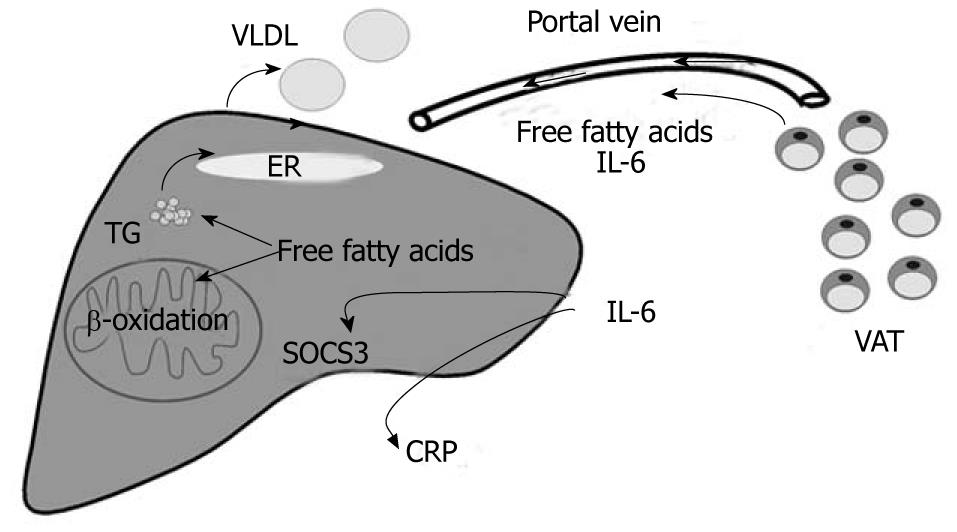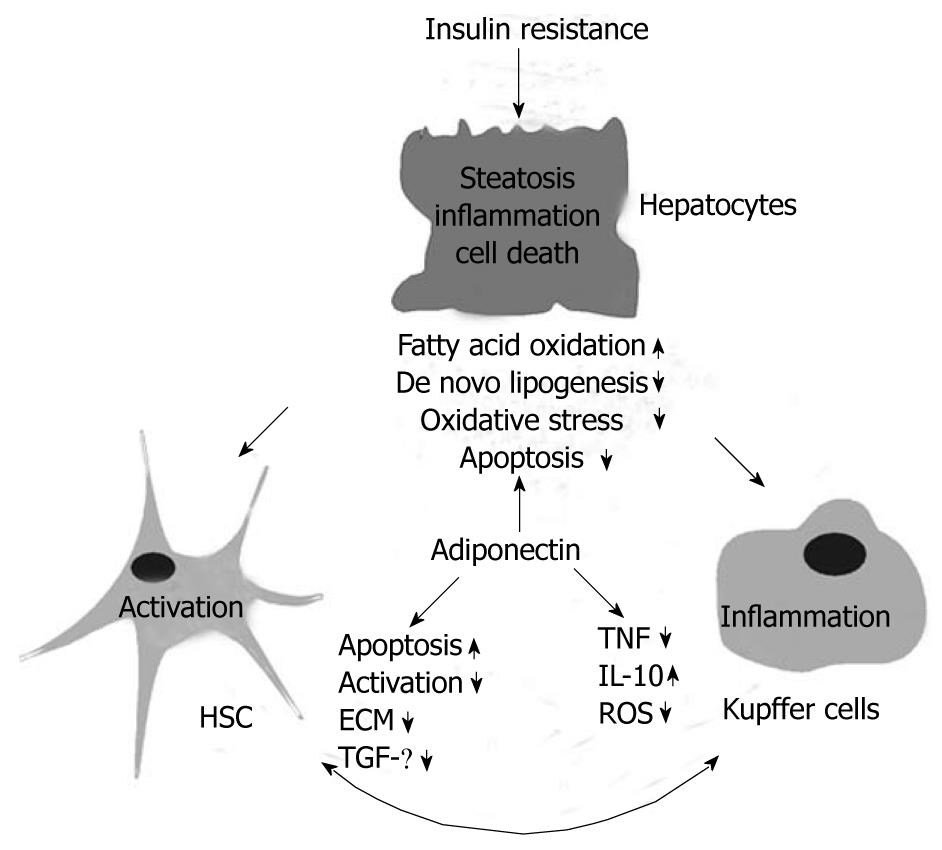Copyright
©2011 Baishideng Publishing Group Co.
World J Gastroenterol. Jun 21, 2011; 17(23): 2801-2811
Published online Jun 21, 2011. doi: 10.3748/wjg.v17.i23.2801
Published online Jun 21, 2011. doi: 10.3748/wjg.v17.i23.2801
Figure 1 Crosstalk of visceral adipose tissue and the liver.
Free fatty acids and Interleukin (IL)-6 released by visceral adipose tissue (VAT) are transported to the liver by the portal vein. Free fatty acids promote steatosis, enhance β-oxidation and the release of very low density lipoproteins (VLDL) contributing to dyslipidemia. IL-6 induces hepatic C-reactive protein (CRP) synthesis and suppressor of cytokine signalling 3 (SOCS3), and thereby is linked to systemic inflammation and hepatic insulin resistance, respectively (adapted from Schaffler A, Scholmerich J, Buchler C. Mechanisms of disease: adipocytokines and visceral adipose tissue--emerging role in nonalcoholic fatty liver disease. Nat Clin Pract Gastroenterol Hepatol 2005; 2: 273-280[6]). ER: Endoplasmatic reticulum; TG: Triglycerides.
Figure 2 Epidemiology of non-alcoholic fatty liver disease.
Current estimates of the prevalence of fatty liver, non-alcoholic steatohepatitis (NASH) and obesity-related liver cirrhosis in the general population and in obesity defined as body mass index (BMI) above 30 kg/m2.
Figure 3 Hepatoprotective effects of adiponectin.
Hepatic insulin resistance correlates with liver fat content, and is currently thought to represent the first incident in metabolic liver diseases. Insulin resistance and steatosis may also promote inflammation and fibrosis although the factors leading to advanced liver damage have not been identified so far. Major pathophysiological alterations of hepatocytes, hepatic stellate cells (HSC) and Kupffer cells in hepatic steatosis and/or non-alcoholic steatohepatitis are indicated. The protective activities of adiponectin are listed and arrows indicate an induction or repression of these pathways/proteins by adiponectin. IL: Interleukin; TGF: Transforming growth factor; TNF: Tumor necrosis factor; ECM: extracellular matrix; ROS: Reactive oxygen species.
- Citation: Buechler C, Wanninger J, Neumeier M. Adiponectin, a key adipokine in obesity related liver diseases. World J Gastroenterol 2011; 17(23): 2801-2811
- URL: https://www.wjgnet.com/1007-9327/full/v17/i23/2801.htm
- DOI: https://dx.doi.org/10.3748/wjg.v17.i23.2801











